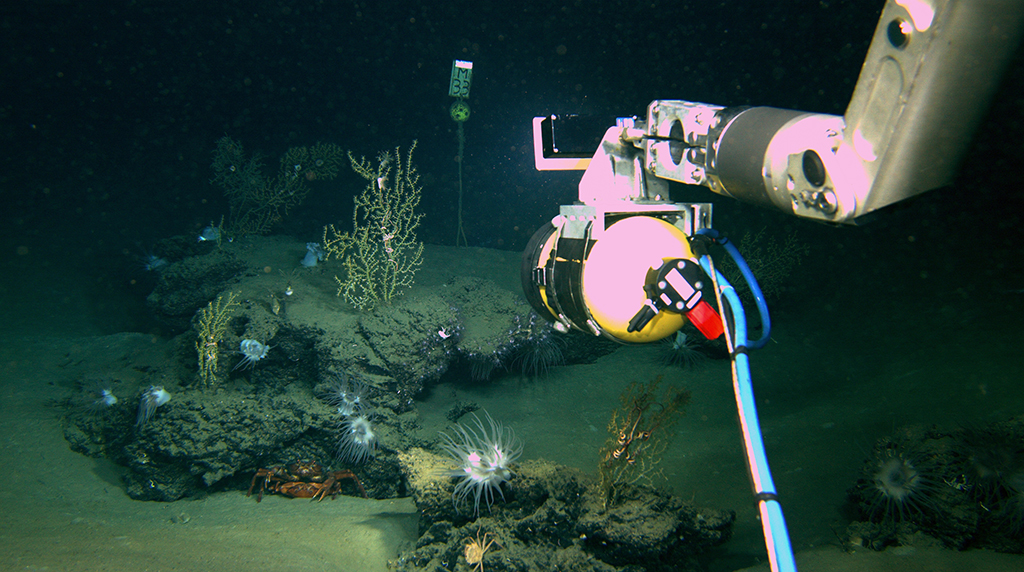June 14, 2018
ECOGIG researchers recently published a paper in the Journal of Applied Ecology - "Projecting the recovery of a long-lived deep-sea coral species after the Deepwater Horizon oil spill using state-structured models." They used a modelling approach to estimate the time it will take for corals impacted by the Deepwater Horizon oil spill to recover. They showed that, while the majority of corals will visibly recover (all branches appear healthy) within 10 years, some of the most heavily impacted coral colonies could take up to 30 years to reach a state where all branches are visibly healthy. They also estimated the number of branches that broke off on each coral and found that by the time they recover from their injuries, some corals will have lost a significant number of branches. Considering the slow growth rates measured for this coral species in a previous study, their results suggest that hundreds of years may be necessary for some of these corals to grow back to their initial size.
The Fisher lab at Pennsylvania State University has been monitoring over 300 individual coral colonies at sites that were affected, or not, by the Deepwater Horizon oil spill, and this monitoring data was using in the research for this paper. This work was initiated by Dr. Charles Fisher (ECOGIG PI and co-author on this paper) and the goals were to determine the short- and long-term impacts of the spill on corals and characterize recovery processes. ECOGIG researchers and members of the Fisher lab went to sea every year between 2011 and 2017 to take high-definition photographs of the same individual corals using Remotely Operated Vehicles (ROVs). For each coral they estimated the proportion of branches that were impacted and watched to see how this proportion changed over time using the photographs taken of each coral. Several coral colonies had not recovered seven years after the spill, so they decided to use the monitoring data to parameterize a model to estimate the time that it will take for these impacted corals to recover, and then use the results to plan for future monitoring. They chose to use a state-structured matrix model, a type of model commonly used in ecological studies, and adapted it to their study. The principle is simple; for every coral colony with a certain number of branches in each state (healthy or impacted) in 2011, the model will project the number of branches in each state for every following years until the colony only has healthy branches. Using this model, it was possible to estimate the time to recovery for each coral but also to estimate the number of branches that broke off during this time period.
Deep-sea corals often have slow growth and metabolic rates, so they are expected to take a long-time to recover after a disturbance. However, the time necessary for impacted corals to recover is generally unknown. In this paper, researchers provide a method to estimate the time to recovery of individual coral colonies based on their initial level of impact. This is important because these estimates can then be used by scientists and policy makers to make appropriate management decisions in order to protect vulnerable deep-sea coral ecosystems. The researchers used the estimated times to recovery to give recommendations on how to optimize monitoring (which is technically challenging and expensive in the deep sea) after impact. In the case of corals impacted by the Deepwater Horizon oil spill, they suggest that corals should be monitored once every two years for a decade (annual monitoring is not necessary since recovery is so slow) and then less frequent monitoring for another two decades in order to follow the potential recovery of the most impacted corals.


















 back to top
back to top